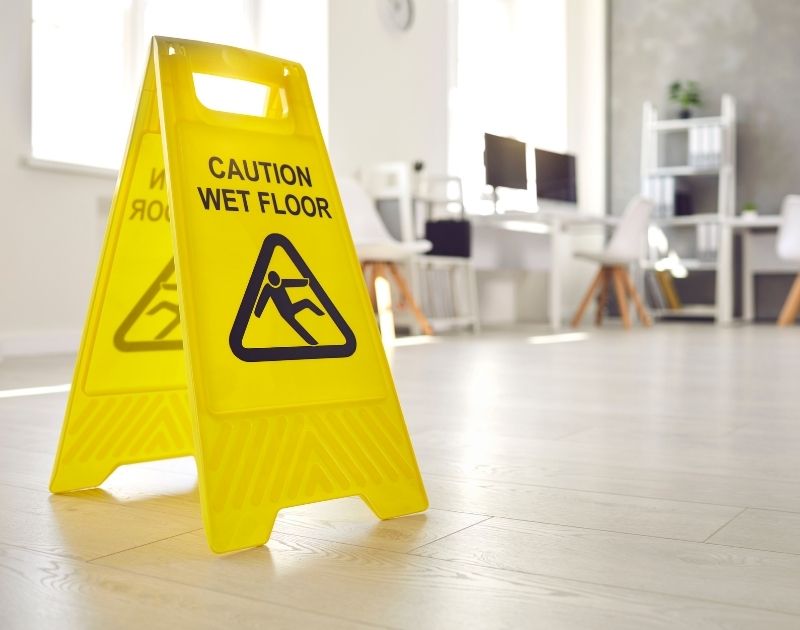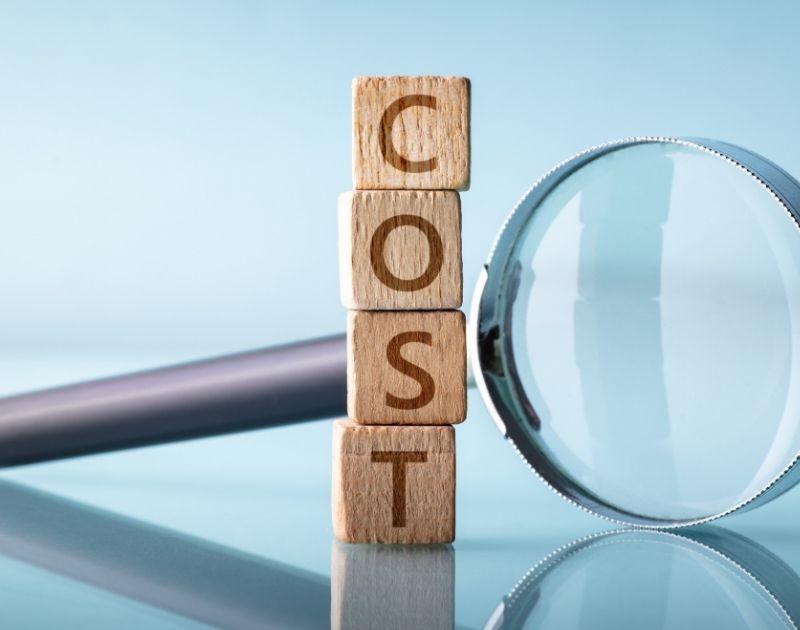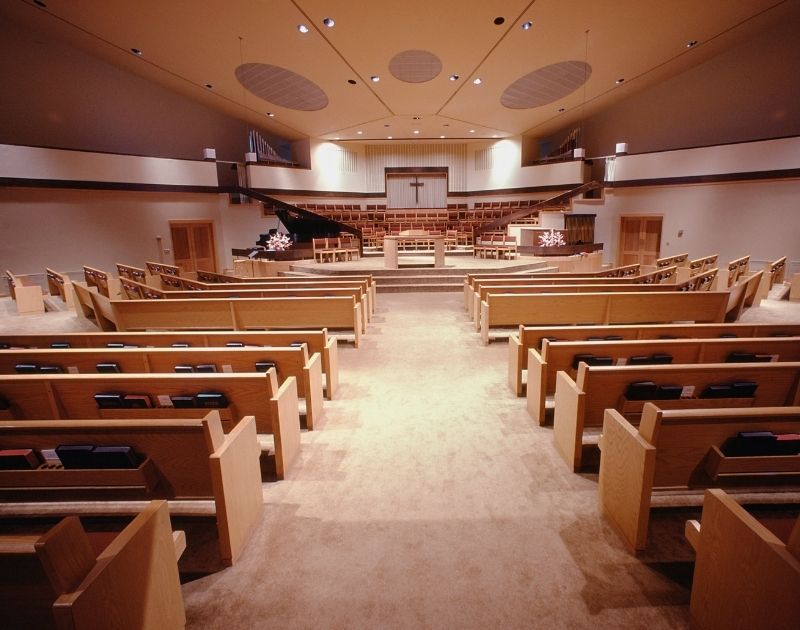Imagine walking into a building at 7 AM to find every floor gleaming, trash bins empty, and restrooms fully stocked – all achieved overnight by smart machines and data-driven systems. This scenario is quickly becoming reality in the world of Commercial Cleaning Services. Artificial intelligence (AI) and automation are transforming how janitorial services are delivered, blending cutting-edge technology with trusted cleaning expertise. As a facility manager, building owner, or property manager, these innovations promise more efficient operations, enhanced hygiene, and peace of mind. And at Assett Commercial Services, we’re not just watching this future unfold – we’re leading the charge in integrating AI into our commercial cleaning solutions.
In this post, we’ll explore how AI is revolutionizing commercial cleaning through automation, robotics, smarter scheduling, and superior cleanliness. We’ll also highlight Assett’s role and expertise in staying ahead of these trends, ensuring our clients benefit from the latest advancements in commercial cleaning services and janitorial services. Let’s dive into the AI-driven future of cleaning and what it means for you.
Automation and Robotics Transform Janitorial Services
The cleaning industry is entering a new era where robots handle the grunt work and humans manage the process. Janitorial services have high potential for automation because many tasks – from floor scrubbing to vacuuming – follow predictable patterns. Autonomous cleaning robots are no longer a futuristic concept; they’re already scrubbing floors and vacuuming carpets in offices, hospitals, airports, and shopping centers. The driving forces behind this shift are clear: businesses want to reduce labor costs, meet higher cleanliness standards, and improve efficiency. Robotics offers round-the-clock performance without fatigue, while AI provides smarter, safer cleaning with minimal supervision.
Robotic cleaning machines can navigate complex environments using AI-driven sensors and mapping technology. Modern autonomous floor cleaners use LiDAR, cameras, and machine learning to map out spaces, avoid obstacles, and adjust to changes in real time. They methodically cover large areas and even reach corners or under furniture that might challenge a human cleaner. These robots continuously learn and improve; by analyzing data from each run, they optimize cleaning routes, identify spots that need extra attention, and adapt to different floor types over time. The result is a consistent, reliable cleaning performance that was unimaginable just a decade ago.
AI-powered cleaning robots like these advanced sweepers are being introduced to manage large facilities. Equipped with smart sensors and AI-driven navigation, they can identify trash versus non-trash and clean only where needed, ensuring thorough coverage while minimizing wasted effort. By automating floor care, such robots maintain consistent cleaning quality, reduce physical strain on human staff, and uphold high hygiene standards around the clock.
The operational benefits of cleaning robots are significant. They don’t require breaks or overtime, meaning they can work through the night and be ready for the next day’s demands. By offloading repetitive tasks like floor mopping to machines, businesses save time and allow human janitors to focus on detailed or delicate work. In fact, one study reports that using robots for floor cleaning can cut labor needs by up to 80% and water usage by 85%. Autonomous scrubbers often follow pre-programmed routes and log every action, producing a coverage map of cleaned areas and highlighting any missed spots. Managers can review these reports to ensure nothing was overlooked. Each machine also tracks its performance – area cleaned per minute, battery status, even how much detergent was used – enabling fine-tuning of operations. As industry analysts note, a modern robotic cleaning fleet lets you “track cleaning coverage, machine uptime, and benchmark performance from one dashboard”. In practical terms, cleaning is evolving from a hidden chore into a transparent, measurable process.
It’s important to recognize that AI-driven robots are here to assist, not replace, the human workforce. By taking over monotonous tasks, robots free up cleaning staff for more complex duties that require judgment and a human touch. Rather than eliminate janitorial jobs, automation is reshaping them. Cleaning personnel are shifting into roles like robot operators, technicians, or quality assurance specialists, overseeing the robots and focusing on high-touch areas that need personal attention. This collaboration between humans and machines can elevate service quality while reducing workers’ physical strain. In fact, industry projections suggest that integrating robotics could boost overall productivity in the cleaning sector by about 30% in the next decade. The takeaway is clear: when smart robots and skilled humans work in tandem, janitorial services become more efficient and effective than ever.
Data-Driven Efficiency in Commercial Cleaning Services
AI’s impact goes beyond robots doing manual tasks – it’s also making the management of cleaning smarter. In traditional setups, cleaning schedules are often static: the same tasks at the same times, regardless of actual need. AI is turning that model on its head with data-driven efficiency. Using sensors and analytics, AI can dynamically adjust cleaning routines to match how a building is actually used. For example, AI systems can analyze data on foot traffic patterns, occupancy levels, even weather or seasonal trends, to predict when and where cleaning is most needed. Rather than cleaning an area just because it’s 5 PM, an AI-informed schedule might focus the team on the lobby after a big event, or deploy an extra robotic vacuum to the conference rooms after a busy day. This proactive approach optimizes resource use and ensures the highest-traffic areas get the most attention.
IoT (Internet of Things) sensors play a big role in enabling these smart cleaning strategies. A network of connected devices can monitor facility conditions in real time and feed data to AI systems. Consider some examples: motion sensors and smart cameras can count people in and out of a space; if a particular restroom saw heavy usage during a lunch hour rush, the system flags it for an immediate cleaning reset. Occupancy sensors identify which areas of a building are bustling and which are underused, allowing cleaning crews (or robots) to concentrate only where needed and skip or delay areas that stayed empty. As one analysis put it, this kind of real-time targeting “identif[ies] high-traffic areas and adjust[s] cleaning efforts accordingly” – meaning your cleaning resources are always deployed to the highest-priority zones.
Other IoT devices support efficiency behind the scenes. Smart dispensers for soap, hand sanitizer, and paper products automatically track their supply levels and can alert staff (or even auto-order refills) when stocks run low. Trash bin sensors detect fill levels, so instead of emptying every trash can on a preset schedule (even those half-empty), crews get notified only when a bin is actually nearly full. This prevents wasted trips and ensures garbage is removed before it overflows. Equipment fitted with sensors can report on its maintenance needs too – for instance, a floor scrubber could alert the team if its filter is dirty or its battery is weakening. These “smart” insights translate to faster decision-making and optimized resource usage on the job. Minor issues like a single missed spot or an almost-empty soap dispenser are caught early, before they become larger problems or complaints.
The bottom line is that AI and connected technology make commercial cleaning far more efficient. Managers gain a clear window into operations that was never possible with paper checklists alone. They can see, via dashboards and reports, exactly what was cleaned, when it was done, and by whom. By replacing guesswork with evidence, cleaning companies can achieve “higher standards, lower costs, [and] better working conditions” through data. For example, an AI scheduling platform might notice that a certain office floor is consistently vacant on Fridays (due to remote work) and automatically reduce cleaning frequency for that day, reallocating those labor hours to a busier area – saving time while maintaining cleanliness where it’s truly needed. In an industry known for tight margins, these efficiency gains are game-changers. One facility maintenance trend report noted that businesses who embrace AI-powered scheduling and monitoring will have a competitive advantage in keeping spaces clean with fewer resources. It’s not just about cutting costs, though – it’s also about ensuring reliability. With automation handling routine decisions, you get predictable outcomes with fewer errors. Every task is tracked and verified, so nothing falls through the cracks. For facility managers, that means fewer headaches and more confidence that the cleaning crew (human or robot) has it under control.
To summarize the efficiency gains AI brings to commercial cleaning services, here are a few key innovations it enables:
-
Smart Scheduling: AI tools create dynamic cleaning schedules based on actual building use. High-traffic areas get more frequent cleaning, while seldom-used spaces get serviced on an as-needed basis. This ensures no area is under- or over-serviced.
-
Route Optimization: Intelligent algorithms map out the best routes for cleaning staff or robots, minimizing backtracking and travel time. Crews spend less time walking and more time cleaning, covering more ground in each shift.
-
Real-Time Alerts: Sensors and AI monitoring systems send instant alerts for issues like spills, supply shortages, or missed tasks. If a spill is detected in a hallway, an AI system can immediately dispatch a cleaner or reroute a nearby robot to address it, rather than waiting for the next scheduled round.
-
Automated Reporting: Detailed reports are generated automatically, showing cleaning performance metrics, compliance with schedules, and any anomalies. Managers no longer need to manually compile logs; they get instant visibility through digital dashboards. This makes audits and client communications much easier.
-
Predictive Maintenance: AI can predict when cleaning equipment will need maintenance or replacement by analyzing usage data (e.g. hours of operation, battery cycles, filter status). Instead of reacting to a broken machine, companies can service equipment proactively during off-hours, reducing downtime and avoiding disruptions to cleaning routines.
By leveraging these AI-driven capabilities, commercial cleaning services providers operate more smoothly and efficiently. Facility managers benefit from clean buildings that run like clockwork, while cleaning teams can accomplish more with less wasted effort. It’s a classic win-win scenario – and it’s one that Assett Commercial Services is already delivering to clients.
Enhanced Hygiene and Cleaning Quality with AI
In the wake of global health concerns and higher expectations for cleanliness, the phrase “clean enough” no longer cuts it. Today, businesses and public facilities demand enhanced hygiene – and AI is helping deliver just that. Traditional cleaning relies on human diligence and periodic inspections to ensure quality. AI, however, enables continuous monitoring and consistent results, taking cleaning quality to a new level.
One way AI improves hygiene is through consistent, verifiable cleaning protocols. Smart cleaning systems leave an audit trail for every task, which is especially crucial in sensitive environments like healthcare, schools, or food-service facilities. For instance, in hospitals or daycare centers, it’s vital to know that disinfection happened on schedule and according to procedure to prevent infection outbreaks. Data-driven cleaning logs provide proof that each required step was completed and at what time. This level of documentation gives confidence that high-touch surfaces (door handles, elevator buttons, etc.) and critical areas have been sanitized properly. In offices or retail settings, it also reassures employees and visitors that spaces are being kept safe and healthy. In short, AI brings accountability to cleaning – you can prove when, where, and how cleaning was done, rather than just trusting that it happened.
AI is also enabling new touchless and automated disinfection technologies that directly boost hygiene. For example, some autonomous cleaning robots can be equipped with UV-C light emitters or electrostatic sprayers to disinfect surfaces as they pass over them, killing germs more consistently than manual methods. There are restroom cleaning robots that use AI to navigate and sanitize fixtures without a person having to touch potentially contaminated surfaces. Even aside from robots, facilities are adopting touchless innovations like sensor-activated soap dispensers, faucets, and door openers to reduce contact points. These technologies, often part of an AI-enhanced facility ecosystem, ensure that cleaning and hygiene maintenance happen with minimal human contact, thereby lowering the risk of cross-contamination. As one industry source noted, the rise of such touchless cleaning technologies (from automated dispensers to self-cleaning systems) is a direct response to the need for higher hygiene standards in the post-pandemic world.
Another advantage is consistency. Humans, as diligent as they may be, can sometimes miss a spot or perform uneven work due to fatigue or time constraints. AI-guided equipment doesn’t get tired or rush through a job. If a robotic vacuum has covered 95% of a floor but missed a corner, it knows and can go back to complete the job – or it will include that missed spot in a report so the morning crew can address it. Machine learning allows these systems to get better with each cycle, learning the layout and “trouble spots” of each facility so that cleaning becomes thorough and predictable. This level of consistent quality means higher overall hygiene. Floors, surfaces, and air (through smart HVAC monitoring) stay consistently cleaner, which contributes to healthier buildings. Indeed, leveraging data and AI leads to “higher standards” of cleanliness alongside the efficiency gains.
AI’s role in hygiene extends to compliance and safety standards as well. Many industries have strict cleaning regulations (think healthcare or food production). AI systems can be programmed to ensure those standards are met every time. They can prompt additional disinfection cycles if certain conditions are detected (for example, if air quality sensors detect a spike in particulate matter, an AI might trigger extra air scrubber cycles or alert cleaning staff to check ventilation). By automatically enforcing protocols and providing digital records, AI helps maintain compliance with health codes and simplifies passing inspections. As a result, businesses using AI-enhanced janitorial services often find it easier to meet the stringent cleanliness requirements that today’s safety-conscious world expects.
Finally, consider peace of mind. For building occupants – whether they’re employees, customers, students, or tenants – knowing that advanced technology is actively keeping the environment clean can be very reassuring. It shows a commitment to their well-being. When you can confidently announce that your facility uses AI-monitored cleaning schedules, robotic floor cleaners, and sensor-verified disinfection, it sends a strong message: this place is clean, and we have the data to back it up. In fact, many facility managers are now using the reports and data from these systems to communicate with stakeholders about cleaning effectiveness. Being transparent about cleaning frequency and results can build trust with tenants and employees who care about health and hygiene. Assett Commercial Services understands how crucial this is, which is why we incorporate technology that provides clients with regular cleaning reports and even photos of completed work – so you’re never in the dark about the cleanliness of your space.
Leading the AI Revolution in Cleaning
As AI and automation reshape the industry, Assett Commercial Services is positioned at the forefront of this revolution. We pride ourselves on blending our deep expertise in commercial cleaning services with the latest technological innovations. Our approach is to stay ahead of the curve so that our clients – facility managers, property owners, and businesses like you – get the absolute best in efficiency, quality, and reliability.
A tradition of excellence meets tech-driven innovation. Assett Commercial Services was originally founded as a healthcare-focused cleaning company, which means stringent sanitation and attention to detail have always been in our DNA. We carry those high standards into every office, school, warehouse, or facility we serve. What’s new is how we augment those standards with AI tools. We actively embrace these innovations in every client partnership. In practice, that means you get the best of both worlds: experienced cleaning professionals plus cutting-edge technology. For example, Assett has implemented a digital “live verification” system that ties each cleaning task to a digital checklist and even timestamped photos. Every time our team cleans a room or completes a task, it’s logged and verifiable. You never have to wonder if something was done – our system proves it, every time. This is how we deliver consistent, high-quality results and full transparency to our clients.
Staying one step ahead with smart data. Across our 13 locations, Assett uses data-driven tactics to optimize janitorial operations for each client. We deploy IoT sensors in restrooms and high-traffic areas that alert us when supplies are low or an area needs extra attention. Our teams receive those alerts in real time, so we can respond before an issue becomes noticeable. We also utilize occupancy data and smart scheduling – in essence, our system learns the ebbs and flows of your facility. If your building is emptier on a Wednesday, we know to scale back cleaning that day; if Fridays are busy, we’ll ensure additional coverage then. The result is that Assett is often one step ahead: cleaning teams go where they’re needed most, exactly when they’re needed, rather than just following a static routine. This proactive approach keeps your facility consistently clean while maximizing efficiency.
Our commitment to innovation doesn’t stop at automation; we also invest in our people. Assett’s Automated Hiring and Training System ensures we bring on board top-notch cleaning staff and equip them with the skills to use modern tools. Every team member is fully vetted and trained not only in cleaning techniques, but also in operating the technology that powers our service. We believe that technology works best in the hands of capable professionals. By upskilling our workforce to work alongside AI – whether it’s learning to operate a robotic floor scrubber or to interpret sensor data on a dashboard – we ensure that our clients benefit from technology without losing the personal touch. Our crews are adept at handling the unexpected situations that only humans can, while our AI systems handle the routine and provide oversight. It’s a powerful combination that translates into superior service quality.
Proof in every clean. Assett provides regular reports to our clients detailing what was cleaned, when, and by whom, often including images of the completed work. These reports offer peace of mind and clear evidence of performance. We’ve found that this level of accountability not only keeps our teams performing at their best, but also builds trust with clients. When you partner with Assett for janitorial services and commercial cleaning, you get the accountability of a high-tech system combined with the reliability of dedicated professionals. We don’t just promise a spotless facility – we deliver data-backed confirmation of it. As our own experience and industry research has shown, this use of technology leads to cleaner, safer facilities and very satisfied clients.
Assett Commercial Services is continuously exploring new AI advancements as well. We keep a close eye on emerging cleaning robots, software updates, and best practices in smart cleaning. Whether it’s testing a new autonomous vacuum model or adopting an improved analytics platform, our goal is to remain a leader in integrating AI innovations into commercial cleaning services. Our vision is to make sure that as the future unfolds, our clients are always benefiting from the most effective and efficient cleaning solutions available.
Embracing the Future of Cleaning
The future of AI in commercial cleaning is not a distant promise – it’s here and now, redefining how we maintain healthy, pristine facilities. From robotic floor cleaners that work through the night, to AI algorithms that schedule cleaning based on real-world usage, technology is elevating commercial cleaning services and janitorial services to new heights of efficiency and quality. For facility managers and building owners, this means cleaner buildings with less hassle, and the confidence that comes from data-driven proof of performance.
Assett Commercial Services is proud to be at the forefront of this transformation. We’re blending our proven expertise with AI and automation to deliver unparalleled cleaning results. The bottom line is simple: a cleaner, smarter facility is a better facility – for your employees, customers, and overall operations.
Ready to experience the future of cleaning today? Contact Assett Commercial Services to learn how our AI-enhanced cleaning programs can benefit your organization. We’ll work with you to design a custom solution that harnesses the latest technology for your unique needs. With Assett’s tech-driven commercial cleaning and janitorial teams on your side, you’ll enjoy a spotless, compliant facility – and the peace of mind that comes with clear, data-backed results every time. Get in touch with us today to transform your cleaning services and ensure your facility stays ahead of the curve in cleanliness, safety, and innovation.




